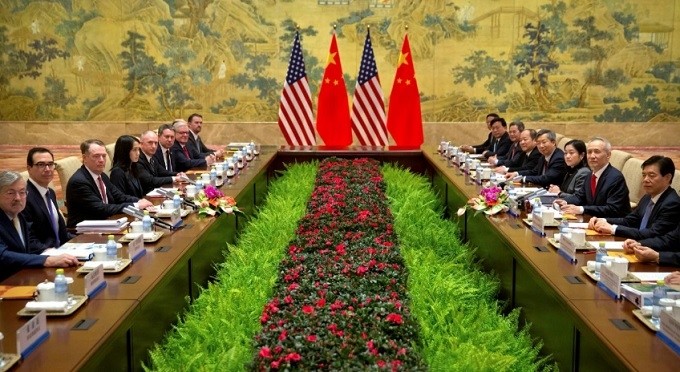The latest round of bilateral trade negotiations between China and the US, which just wrapped up in Beijing, is the second round of high-level talks in 2019. This shows that the world’s two leading economies wish and endeavor to accelerate negotiations before the deadline of the 90-day “trade war suspension” on March 1. After this time, if the two sides still cannot reach an agreement, the US will increase tariffs from 10% to 25% on US$200 billion worth of Chinese goods.
However, like the January negotiation in Washington DC, the negotiation round in Beijing on February 14-15 continued to see no breakthrough, as the two sides failed to finalise a deal or issue specific statements. Although both agreed to “have had useful talks”, it can be seen that the only positive result was their consensus on the immediate resumption of negotiations this week in Washington.
According to a statement from the White House, the US focused discussions in Beijing on the structural issues related to technology transfer, intellectual property rights, cyber security, agriculture, service, non-tariff barriers and currency. The two sides also discussed China’s commitment to increase the purchases of US goods and services to balance bilateral trade balance. However, these are all the core issues of disagreement between the two sides thus far. Therefore, although both sides have made positive moves before the upcoming talks, observers still do not put much expectation on the possible signing of a bilateral agreement.
In fact, according to experts, Washington’s requirements concerning intellectual property protection, the end of US forced technology transfer, or restricting the government’s sponsorship for exporters, are the root issues which are not easy for Beijing to change. Meanwhile, China continues to stand firm on the demands of the US regarding agricultural policies and the role of the State in the economy. The US goal of urging China to adjust its policies and economic structure is extremely difficult to reach, especially in the fields of intellectual property and agricultural policies. In the latest round of negotiations, disagreements over the aforementioned fundamental issues continued to remain unresolved. Therefore, despite affirming that “progress has been made”, both sides still admitted “there are very tough issues” and there are still a lot of things for officials of the two countries to finalise.
It can be seen that the handling of trade disagreements is the goal for China and the US. As for US President Donald Trump, this goal is embraced in his presidential re-election campaign next year. Meanwhile, despite maintaining a tough stance, Beijing’s leaders are also in concessions to tackle the trade deficit with the US. Chinese President Xi Jinping stressed that China and the US have many common interests in protecting peace and stability, and promoting economic development and global prosperity, adding that the maintenance of healthy and stable China-US relations is appropriate, and cooperation is always the best choice for the benefit of the people of the two countries and around the world. President Trump also left open the possibility of extending the “trade war truce”, aiming to reach a trade agreement with China.
With two consecutive high-level talks in less than two months, alongside the previous decision on “trade battle suspension”, both China and the US have clearly demonstrated their willingness to dissolve trade disagreements. Expectations for a specific agreement continue to be deferred to the “sprint round of talks” in Washington DC right ahead of the March 1 ceasefire deadline.
















